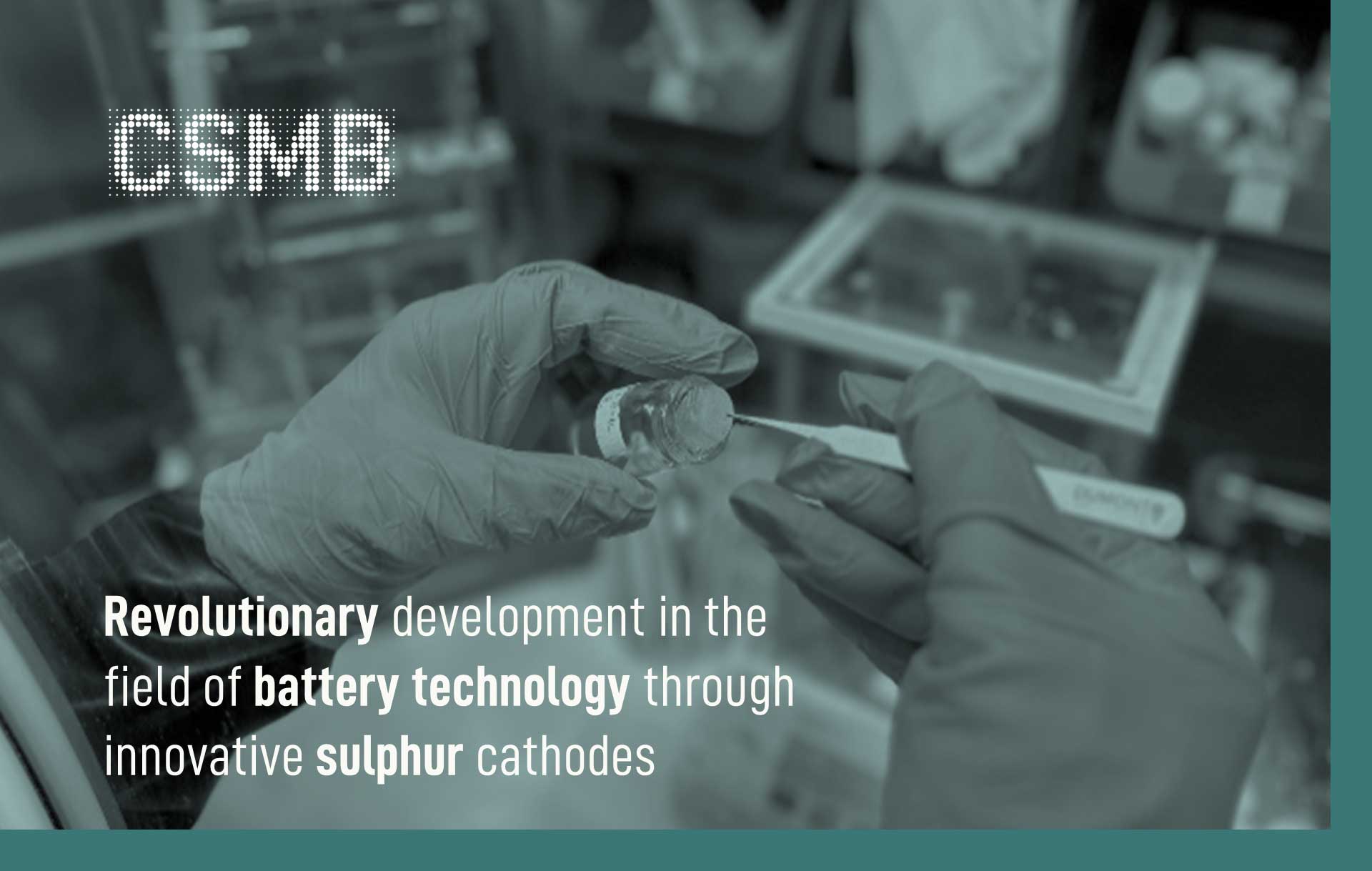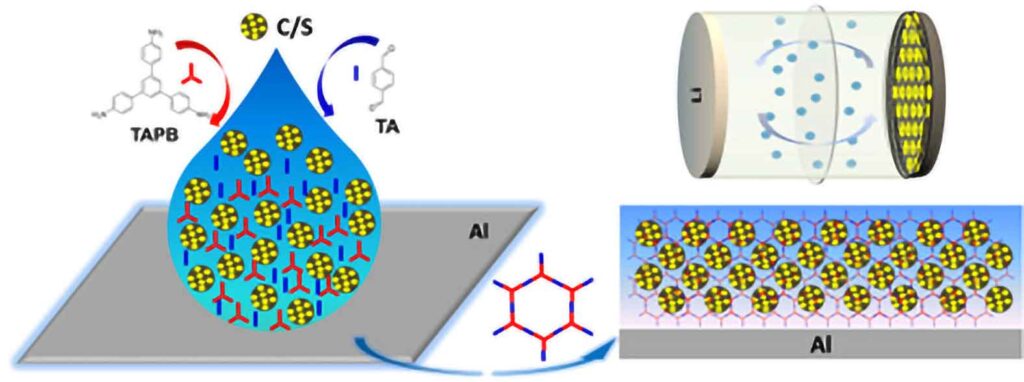
Innovative research has brought us closer to sustainable battery technology with a breakthrough in sulfur-based cathodes. Traditionally, lithium-ion batteries — central to electronics and electric vehicles — rely on scarce materials like cobalt. Sulfur offers a greener alternative due to its abundance and impressive theoretical capacity of 1675 mAh g-1.
A major challenge with sulfur has been the “sulfur-shuttle” effect, where sulfur’s mobility leads to rapid battery degradation. However, a recent study introduces a novel solution: encapsulating sulfur within a microporous, imine-based polymer network directly on the current collector. This one-pot synthesis approach not only streamlines production but also signicantly boosts battery performance.
This innovative cathode design enables selective electrolyte and Li-ion transport while robustly containing the sulfur, delivering high performance across discharge rates — from 1360 mAh g-1 at 0.1 C to 807 mAh g-1 at 3 C. Advanced analysis through DFT calculations and operando Raman spectroscopy has shown that the polymer’s imine groups enhance polysulde binding, effectively reducing degradation.
This breakthrough paves the way for sulfur-based cathodes to become a viable alternative to metalbased ones, marking a signicant step toward greener, high-performance battery technologies. Keep an eye on this space — sulfur could be the future of batteries!
Graphic abstract:
In-situ polymerization techniques encapsulate sulfur within microporous imine polymers, addressing the sulfur-shuttle issue and boosting electrochemical performance. This innovative strategy marks a new direction for creating efficient sulfur-based cathodes in lithium-sulfur batteries.

Angew. Chem. Int. Ed. 2024, e202400382.

